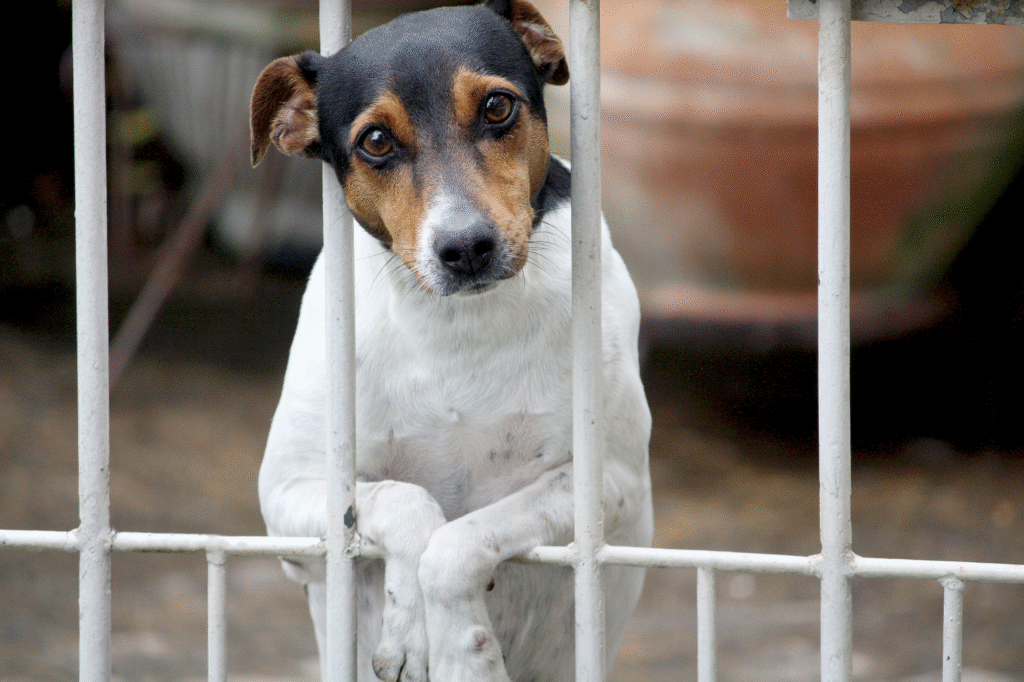People adore them at first, then reality shows up with a bill and a leash.

Some dogs start their lives in homes with matching beds and Instagram captions, only to end up back at shelters once the sparkle wears off. It’s not that these breeds aren’t lovable; they just come with quirks, energy levels, or needs that hit hard after the initial excitement fades. Turns out, a lot of people adopt with their hearts and forget their calendar, wallet, and sanity might need to agree first.
1. Huskies are too clever for homes that underestimate them.

According to the American Kennel Club, Huskies rank high on shelter surrender lists because they outsmart owners who think a fenced yard is enough. These dogs were built to pull sleds in subzero temperatures, not lounge in a tiny apartment while someone’s at work all day. That intelligence and energy often turn destructive when bored.
What starts as cute howling can turn into full-blown escape artistry, with Huskies scaling fences and unlocking doors. People often can’t keep up with their exercise needs, leading to quick burnout. A breed this strong-willed and athletic needs training and activity from day one, or owners discover too late they adopted an athlete, not a couch buddy.
2. Dalmatians are dazzling until reality sinks in.

As stated by the Humane Society, Dalmatians often experience a boom in adoptions after movies and TV make them look irresistible. The trouble begins when people realize they are high-energy, high-shedding, and prone to stubbornness. Many don’t expect the daily exercise commitment and get overwhelmed fast.
Their need for structured mental stimulation is no joke. Bored Dalmatians can chew, dig, and run laps indoors that rival a toddler’s sugar rush. When that behavior escalates, families panic, and surrender follows. It’s not that they’re bad dogs, they just require more effort than a casual dog owner bargained for.
3. Chihuahuas rule the house until it backfires.

Reported by PetFinder, Chihuahuas often top shelter intake numbers in urban areas. These pocket-sized dogs have huge personalities and, without boundaries, can become nippy and defensive. Many owners adopt them thinking they’re low-maintenance purse companions, only to discover they need consistent training like any other breed.
Behavioral issues, like excessive barking or aggression toward strangers, tend to appear when boundaries aren’t set early. Combine that with housebreaking difficulties and fragile bones around kids, and many owners feel unprepared. Their size might be tiny, but their attitudes require big-dog parenting energy most new owners underestimate.
4. Border Collies can overwhelm even busy households.

Families often surrender Border Collies after discovering just how tireless they are. These are dogs bred to herd sheep for hours on rugged terrain. Even two walks a day doesn’t scratch their mental and physical itch. Without tasks, their energy morphs into destructive behaviors like chewing walls or herding children.
Many owners think love will offset unmet exercise needs but quickly learn that intelligence without an outlet equals chaos. Training, agility work, or even dog sports are musts. Without those, people feel like they brought home a four-legged tornado and surrender becomes their last resort.
5. Jack Russell Terriers turn homes into obstacle courses.

The tiny size tricks adopters into thinking they’re low-energy lap dogs, but Jack Russell Terriers are wired for speed and digging. They need a job or sport to prevent destructive energy bursts. Many people simply can’t manage their relentless drive to explore, climb, and dismantle anything interesting.
When boredom strikes, they scale furniture, tunnel through gardens, and bark at invisible enemies with shocking persistence. Owners often underestimate how much supervision they require, and the daily grind wears people down fast. It’s not long before shelters see yet another surrendered little jumper.
6. Great Danes come with a size reality check.

Great Danes are sweet, but their size alone creates problems for unprepared families. Apartments feel smaller, food bills explode, and vet care costs skyrocket. Many first-time big dog owners are shocked at just how much planning and money it takes to care for them long-term.
Add in short life spans and health issues common to giant breeds, and owners get emotionally and financially drained. Shelters regularly see them returned simply because their presence feels overwhelming, especially when they reach full size faster than people expect.
7. Beagles may smell their way into trouble.

Adopted for their adorable looks and cheerful personalities, Beagles often catch families off guard with their stubborn streak and tendency to follow scents straight out the door. They’re escape artists who need secure fencing and lots of mental stimulation to stay happy and safe.
They also bark. A lot. That musical voice they’re famous for becomes a major point of conflict in tight neighborhoods. After weeks of noisy complaints and endless attempts at containment, many owners finally call it quits.
8. Australian Cattle Dogs demand more than weekend hikes.

These dogs are intense workers designed to move livestock, not lounge on couches. Their drive to herd means nipping at heels, chasing bikes, and obsessively circling kids if not trained properly. People love their intelligence but often don’t realize how much daily structure they crave.
Without jobs, they create their own chaos, which usually involves chewed furniture or endless barking. Families who wanted an active hiking buddy quickly find themselves overmatched by an athlete looking for a career, not just a weekend warrior gig.
9. Cane Corsos can feel intimidating fast.

Strong, confident, and protective, Cane Corsos need consistent training and socialization from day one. Many owners underestimate the commitment required to raise them into balanced, trustworthy companions. If left unchecked, their size and guarding instincts quickly become overwhelming.
When combined with inexperience, that protective streak can scare visitors, neighbors, and even family members. Shelters often see them surrendered by people who fell for their majestic looks but weren’t ready for the responsibility of handling a dog with such serious presence.
10. Cocker Spaniels sometimes flip personalities with stress.

Known for their adorable, silky coats, Cocker Spaniels actually require extensive grooming and emotional support. Their sensitive nature means poor training or stressful environments can lead to defensive biting or anxiety-driven behavior. That surprises owners expecting a low-maintenance family dog.
The reality of regular grooming costs and possible behavior quirks often wears people down. These dogs thrive with stable routines and patience, which are not always available in busy households unprepared for the commitment.
11. Weimaraners push owners to keep moving.

They’re stunning, loyal, and have an almost magnetic personality, but Weimaraners are endurance athletes disguised as family pets. Without serious exercise and mental challenges, they grow destructive fast. Even seasoned dog owners sometimes feel overwhelmed by their energy and separation anxiety tendencies.
When left alone too long, they chew, howl, and dig like seasoned escape artists. Families who imagined a calm house companion often return them, not because they aren’t wonderful dogs, but because they demand a lifestyle most can’t sustain.
12. Shiba Inus frustrate owners with their independence.

Shiba Inus look like foxes and have the personality to match. They are clean, clever, and fiercely independent, which sounds charming until training time. They resist commands, ignore recalls, and will happily leave their owners chasing after them in a park.
That aloofness can feel like rejection to people who expected an affectionate shadow. Add in shedding, stubbornness, and an almost cat-like need for personal space, and some owners simply decide it’s not the match they thought it would be.
